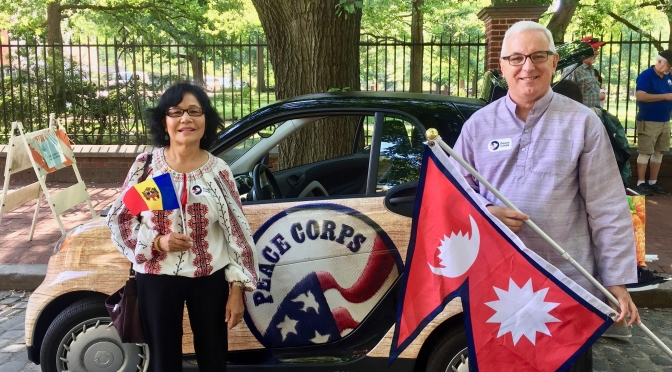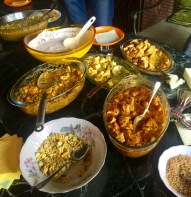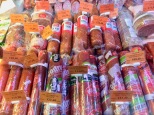I never ate tacos, ramen or a Cuban sandwich when I was growing up. I didn’t even know what they were.
By contrast, it was unremarkable the other night when Champa and I stopped for dinner and ordered fajitas and enchiladas.
It also felt routine when I cooked Thai food for dinner guests recently: basil chicken with eggplant, Pad Thai with shrimp, coconut-flavored meatballs and sticky rice with mangoes, all served with Singha beer.
Champa and I have sriracha sauce in our cupboard, mango kefir in our refrigerator and phyllo in our freezer. They’re as normal to us as Nepali food is to my sons and their families. When they visit, they look forward to eating curried chicken, lentils, vegetables and rice. The only question is whether Champa will also prepare momos, Nepal’s delicious dumplings (as she’s doing in the photo).
For them, “exotic” might be the meatloaf or chicken with canned fruit cocktail that my mother used to cook for my sisters and me.
Few things have changed as much in my lifetime as what I eat. I grew up in Freeport, Long Island, a suburban town more diverse than most of its richer neighbors. My parents were relatively worldly. Yet we rarely ate “ethnic food” and, when we did, it was pizza or American-style Chinese food. We didn’t go out to dinner much and it was usually at an Italian place where I’d eat spaghetti and meatballs. Quiche and fondue were the height of sophistication.
When I went to college in Rhode Island, my horizons expanded to include quahogs and Portuguese sweet bread. But it was only after graduation in 1975, when I backpacked around the world with a friend, that I truly began to appreciate other cuisines, from pulaos in Afghanistan to shawarma in Egypt. I still remember the Kwality Restaurant in New Delhi where I tried tandoori chicken and naan. They were so good.
My culinary awakening coincided with the broadening of American cuisine generally. From bagels to burritos, foods that were once “ethnic” became widespread. Newer foods like phở and bibimbap entered the mainstream. My daughter-in-law, whose family came from Puerto Rico, introduced me to pasteles and tostones. Now I see these around town, too. Here in Durham, a mid-size city, we have restaurants offering cuisines from Austria to Zimbabwe. Our supermarkets have aisles of international foods. We have several specialty groceries, too.
If you’d told me when I was younger that I’d enjoy khinkali from Georgia and jerk chicken from Jamaica, I might have guessed you were talking about Atlanta and a stop on the Long Island Rail Road. Little did I know that poke, focaccia and macarons would all become part of my vocabulary. I’d witness the rise and fall of pepper-crusted tuna and molten chocolate cake. I’d buy an Instant Pot and an air fryer. I’d fall in love with Moldovan cuisine and crave Carolina barbecue as a local comfort food.
I don’t consider myself a “foodie.” I haven’t yet embraced some trends such as bubble tea and kombucha and I’ve only tried a few vegan recipes. I still enjoy an occasional burger or Subway sandwich. But I plan to keep an open mind (and mouth) about whatever comes next.
Maybe I should offer a toast to this. Maybe even with avocados.











































